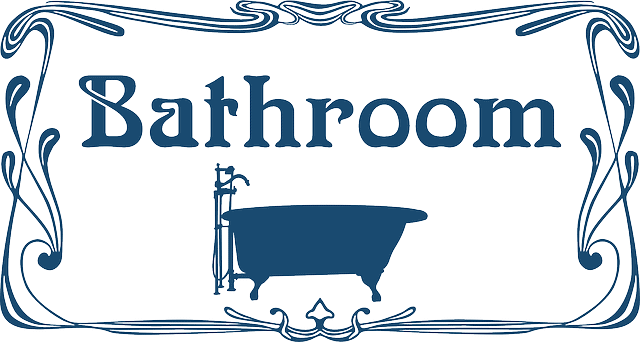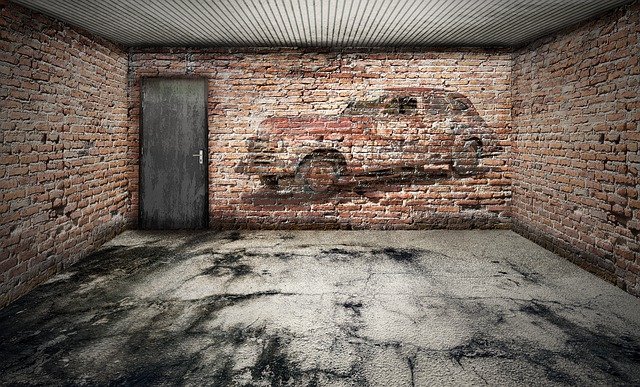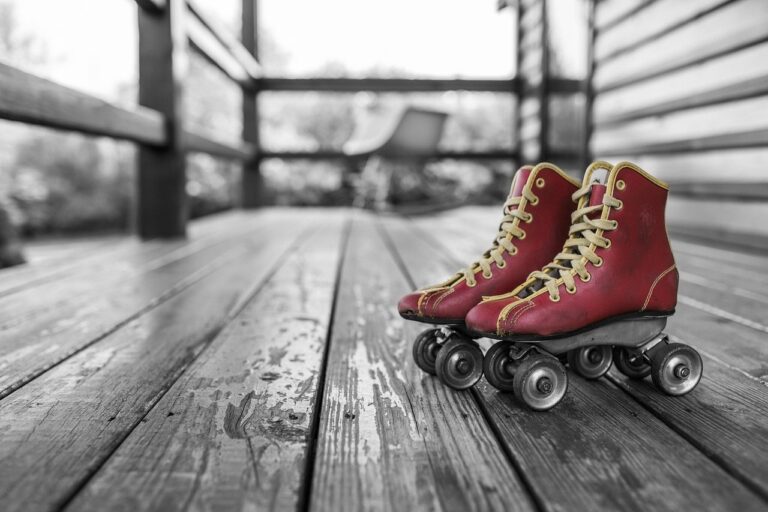Can You Use Acrylic Paint On Metal?
Metal surfaces could be coated with paint for various purposes. You may often want to improve its aesthetic value, prevent rusting, or even boost the primary material’s service life. Could you be planning to paint your metal surface and wonders, which paint to use? 
Well, can you use acrylic paint on metal? The direct answer is yes. Acrylic paint works incredibly well on the metal surface without chipping or peeling off. However, proper paint preparations and surface priming are crucial steps towards achieving a durable acrylic coat.
Besides, acrylic paint is coupled with numerous advantages such as long-lasting effects, fast-drying, fade-resistance, more comfortable to apply, and scratch-resistance. You will love the permanent coating that acrylic paint forms upon drying and unmatched surface finish compared to latex paint.
Indeed, Acrylic paint sticks firmly on the metal surface than latex paint, and it’s easier to clean with soap and water when wet. But, dried acrylic paint is a bit difficult to remove from the metal surface.
But metals such as stainless steel, bronze, or chrome are attractive without necessarily painting them.
Details: Can You Use Acrylic Paint On Metal
a. Active ingredients
Acrylic paint is an oil-based paint formulated using a complex chemical structure that breaks easily upon application. The active ingredients are self-activating and intermittently embedded in the carbon-carbon structure within the compound.
Moreover, acrylic paint is agitated with additives that improve stickiness and provide varieties of optional colors. According to the manufacturer’s specifications, the chemical formula used in acrylic paint production may require thinning or not.
Some acrylic paints are slightly mixed with latex base compound to improve surface finish and vary application efficiency on surfaces like wood.
Acrylic paint won’t irritate your skin upon contact; however, the smell associated with thinned paint may upset your respiratory system.
See Also: Sprayer for Latex Paint
b. Coat strength
Acrylic paint should be thinned appropriately before applications (as per the manufacturer’s guidelines). In this case, you will boost coat strength and stickiness on a given metal surface.
Prime the surface before first coat application is crucial as it assists in stickiness boost and peel elimination. Usually, acrylic paint sticks firmly on a well-polished surface on a single coat application.
However, it’s always important to apply two or three coats on the metal surface that is being painted for the first time –the application should be made intermittently with the right curing timing.
Wet acrylic paint has lower surface strength (can easily be removed with water and soapy detergent). Therefore, touching the wet, painted surface should be avoided at all costs. Contrary, dried acrylic paint forms a robust permanent surface bond – the stain may even penetrate to the primary metal surface layer upon application. Dried acrylic paint requires unique paint removal methods.
See Also: Airless Paint Sprayer
c. Type of metal surfaces
It’s advisable to use acrylic paint on mild steel metallic material than latex paint. Usually, mild steel is susceptible to rusting if exposed to a humid environment. Therefore, applying an acrylic coat will not only improve its aesthetic appearance but also prevents rusting occurrences.
Refined stainless steel and aluminum metals may post painting challenges paint applications due to the delicate surface polish. Carry out appropriate priming and select a superior painting method such as a spray painter to achieve a perfect finish.
With acrylic paint, you can apply it over any nature’s metal surface (whether rough or smooth) without any problem. Though polishing is needed for extruded metals/rust-prone metal, cast metals can be painted directly.
NB: Acrylic paint works for all types of metal without any problem.
d. Application methods
Painting mild steel with acrylic paint can be done effectively using a paintbrush – the metal surface allows smooth paint flow without drains or runs. However, refined stainless steel, aluminum, or chrome alloys may be cumbersome to paint with a paintbrush.
Alternative methods like spray painter work incredibly for all metal types – it is much more efficient, though slightly expensive. Rollers are the best stools for painting flat metallic surfaces (sheet metals and flat bars) as they limit drains and improves paint penetrations.
For commercial acrylic metal painting, consider using a spray painter.
See Also: Paint Sprayer for Interior Walls
e. Advantages
Using acrylic paint on the metal surface improves aesthetic appearance. Besides, acrylic paint covers the metal surface firmly, prevents it from scratches (scratch-resistant), and improves its service life.
Acrylic paint is fast-drying, unlike latex paint, and it’s more comfortable to apply with a paintbrush or a roller. Acrylic paint is also durable (on a single coat) and fade-resistant when exposed to adverse conditions.
Notably, Acrylic paint is simple to prepare and clean (with soap and detergent) when wet.
See Also: Sealant for Metal Roof
f. Disadvantages
Dried acrylic paint is cumbersome to remove. A unique paint removal process is required, which may be time consuming and expensive.
Moreover, thinned acrylic paint may upset your nasal cavity, irritate your respiratory system (if inhaled) or cause stomach problems when swallowed.
How to paint Acrylic Paint on metal
To achieve an excellent finish when painting a metal surface with acrylic paint, you need to follow the steps highlighted below keenly.
Step 1: Paint Selection
Acrylic paint is manufactured in different forms. It may be solid, semi-solid, cream, or liquid solvent. The nature of the metal surface under the acrylic painting process determines the type of paint selected.
Cream acrylic paint is best for use where surface metal has many inclusions and sealing points that need to be covered, while liquid acrylic paint should be considered for flats surfaces.
Select acrylic paint that requires little or no thinning at all.
See Also: Rustoleum galvanized metal primer
Step2: Tool Selection
Mild steel and cast metals can be painted using a paintbrush, whereas aluminum or stainless steel metal needs a paint sprayer.
Flat bars and sheet metals can be painted using a roller, paintbrush, or paint sprayer. When making tools selection decisions, consider the surface to be painted, area, and intended final finish.
Step 3: Surface Preparation
Sand/polish the metal surface sufficiently using sandpaper of polishing abrasive – this helps remove rust coating, inclusions, or debris from the surface.
Cast metals may not require the sanding process if no machining is done – you can apply acrylic paint directly without any problem. Clean off the dust/debris from the surface – they weaken paint stickiness ability.
Step 4: Paint Preparation
Thin paint appropriately using a thinner or turpentine. This is done through the help of instructions given by the manufacturer.
Always carry a drop test experiment before actual painting to ascertain acrylic paint concentration over a given surface.
See Also: Spray Paint for Metal
Step 5: Actual Painting
Apply primer on a metal surface that is newly painted (primer sets a base for coating to stick upon firmly). Leave the primer to dry before applying the first coating.
Do not overload the paintbrush or a roller when painting – this may lead to drains or runs on the metal surface.
Excellent acrylic paint application should leave a thin coating on the metal surface that dries faster. Add a second coating to improve the outlook impression when need be.
Step 6: Finish
Do not polish acrylic painted metal surface – this creates ruggedness or destroys fine finish. Leave the final coat to dry naturally or blow warm air over the painted surface.
You can sprinkle cold water over the acrylic painted metal surface to keep off the dust from settling when drying – the paint has high electrostatic charges that attract dust on the surface.
See Also: Paint for Metal Garage Door
Precautions to Take When Using Acrylic Paint on Metal
Acrylic paint application over metal surface should be carried out under adherence of strict precautions as highlighted below:
- Always wear protective gear during the paint application process – face mask, dust coat, gloves, and respirator.
- Cary drop test experiment over the metal surface to be painted before actual paint is done.
- Metal surfaces should be prepped/primed for the first coat application to improve acrylic paint’s stickiness ability.
- Polish/sand metal surface where appropriate before paint application
- Never smell acrylic paint directly – it may irritate your respiratory system.
- Always follow the manufacturer’s instructions/labels when preparing acrylic paint.
- Avoid sanding the final painted surface, and the store remained acrylic paint in cool dried paint.
See Also: Paint Stripper for Metal
Conclusion
You can apply acrylic paint on the metal surface without any problem. The paint has active ingredients that stick firmly on the metal surface. Upon application, acrylic paint forms a permanent coating that is more cumbersome to remove when dried.
However, wet acrylic paint can be removed easily with water and soap detergent in painting error. You will love the unique surface finish that acrylic paint leaves behind.
Besides, acrylic paint is fast-drying, long-lasting, fade-resistant, scratch-resistant, and more comfortable to apply. Further, the paint can be used in coating any metal provided proper application procedure is followed, as highlighted in this article.





